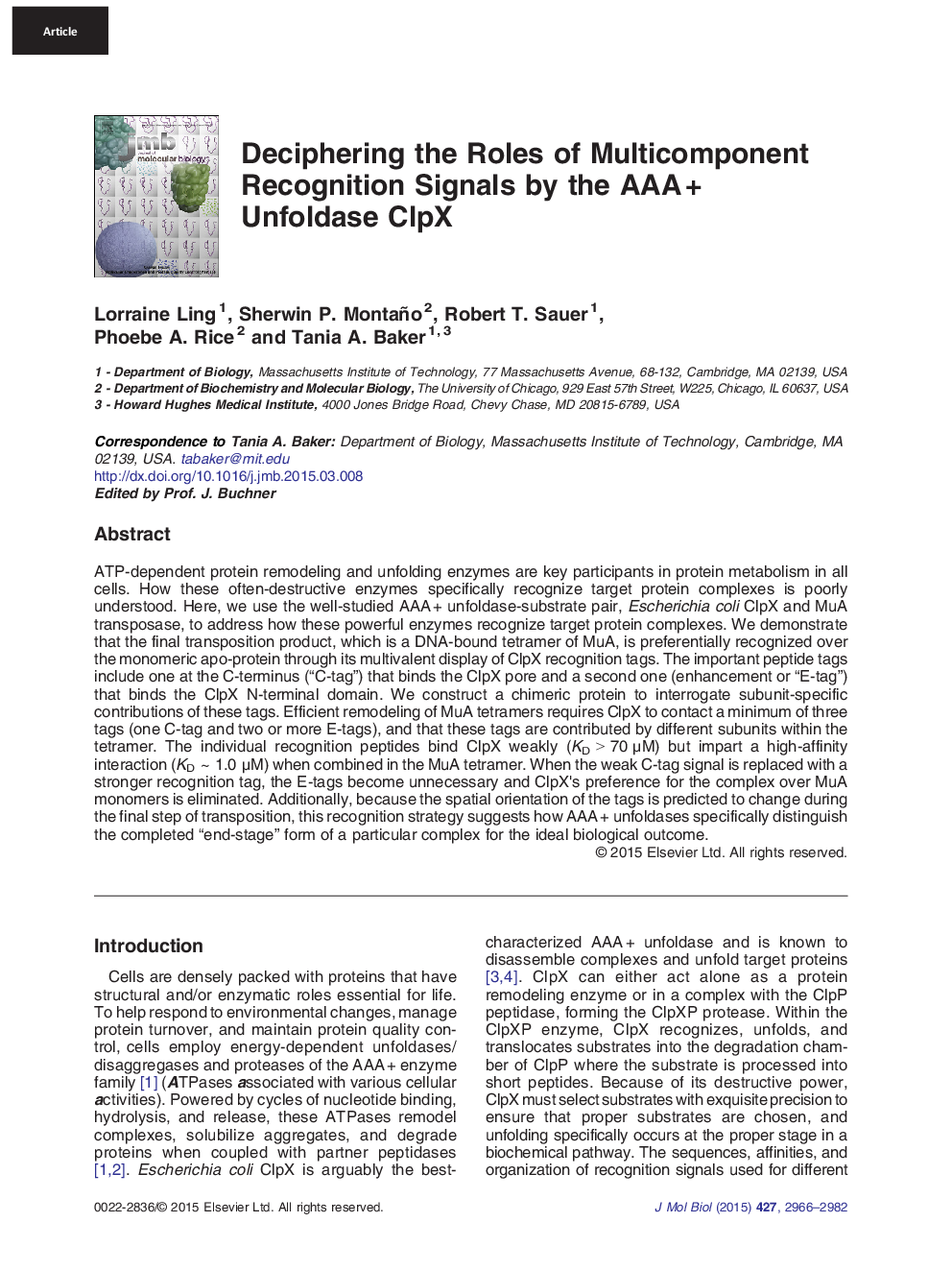| کد مقاله | کد نشریه | سال انتشار | مقاله انگلیسی | نسخه تمام متن |
|---|---|---|---|---|
| 2184496 | 1095867 | 2015 | 17 صفحه PDF | دانلود رایگان |

• AAA + unfoldases change the conformation of substrate proteins and protein complexes.
• How specific substrates are chosen with high priority at the proper time in a reaction pathway is being studied.
• The AAA + unfoldase ClpX specifically recognizes two classes of recognition tags in the MuA transposase.
• Specific features of these MuA tag classes direct ClpX to the biologically important reaction path.
ATP-dependent protein remodeling and unfolding enzymes are key participants in protein metabolism in all cells. How these often-destructive enzymes specifically recognize target protein complexes is poorly understood. Here, we use the well-studied AAA + unfoldase-substrate pair, Escherichia coli ClpX and MuA transposase, to address how these powerful enzymes recognize target protein complexes. We demonstrate that the final transposition product, which is a DNA-bound tetramer of MuA, is preferentially recognized over the monomeric apo-protein through its multivalent display of ClpX recognition tags. The important peptide tags include one at the C-terminus (“C-tag”) that binds the ClpX pore and a second one (enhancement or “E-tag”) that binds the ClpX N-terminal domain. We construct a chimeric protein to interrogate subunit-specific contributions of these tags. Efficient remodeling of MuA tetramers requires ClpX to contact a minimum of three tags (one C-tag and two or more E-tags), and that these tags are contributed by different subunits within the tetramer. The individual recognition peptides bind ClpX weakly (KD > 70 μM) but impart a high-affinity interaction (KD ~ 1.0 μM) when combined in the MuA tetramer. When the weak C-tag signal is replaced with a stronger recognition tag, the E-tags become unnecessary and ClpX's preference for the complex over MuA monomers is eliminated. Additionally, because the spatial orientation of the tags is predicted to change during the final step of transposition, this recognition strategy suggests how AAA + unfoldases specifically distinguish the completed “end-stage” form of a particular complex for the ideal biological outcome.
Graphical AbstractFigure optionsDownload high-quality image (105 K)Download as PowerPoint slide
Journal: Journal of Molecular Biology - Volume 427, Issue 18, 11 September 2015, Pages 2966–2982